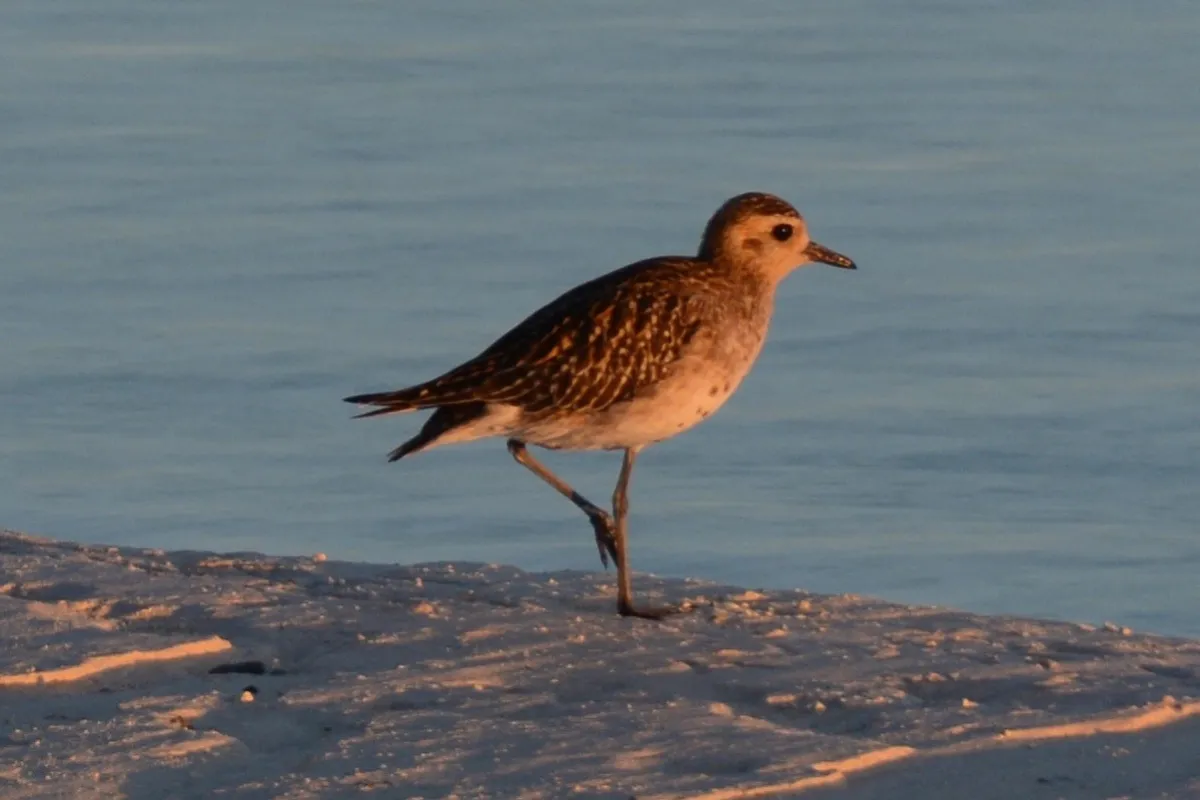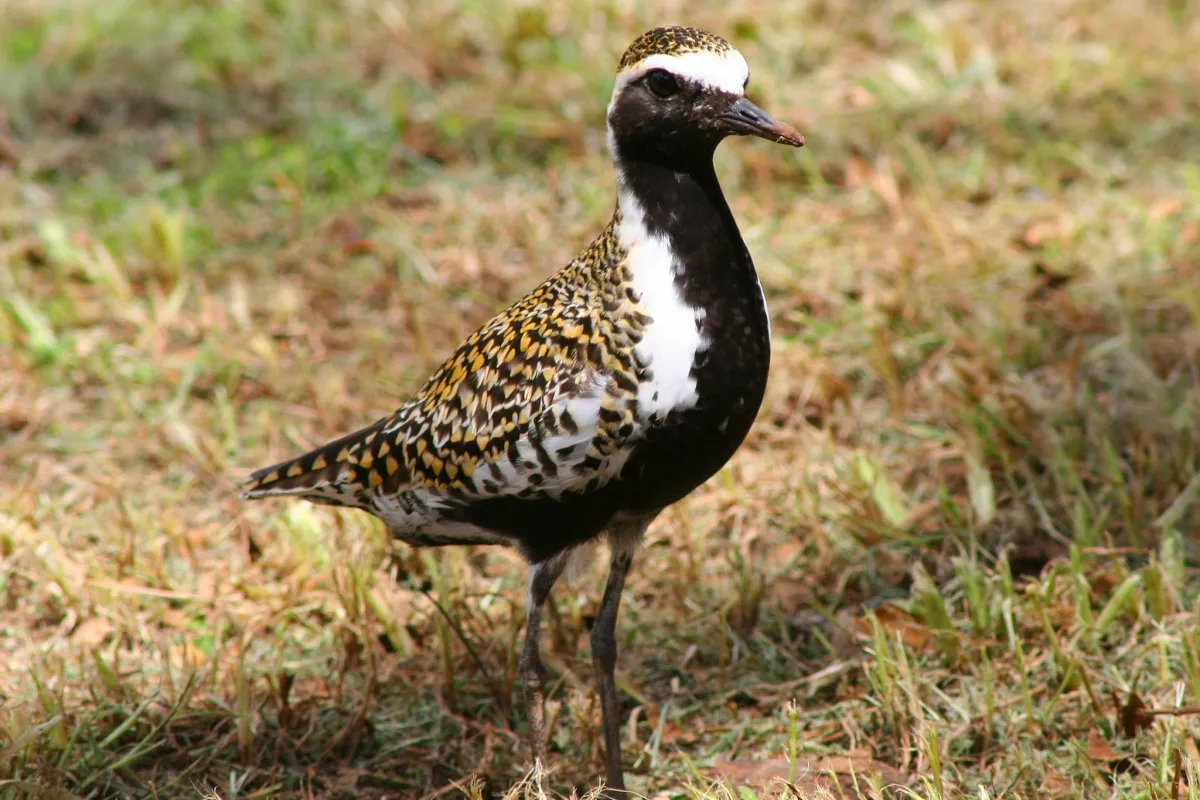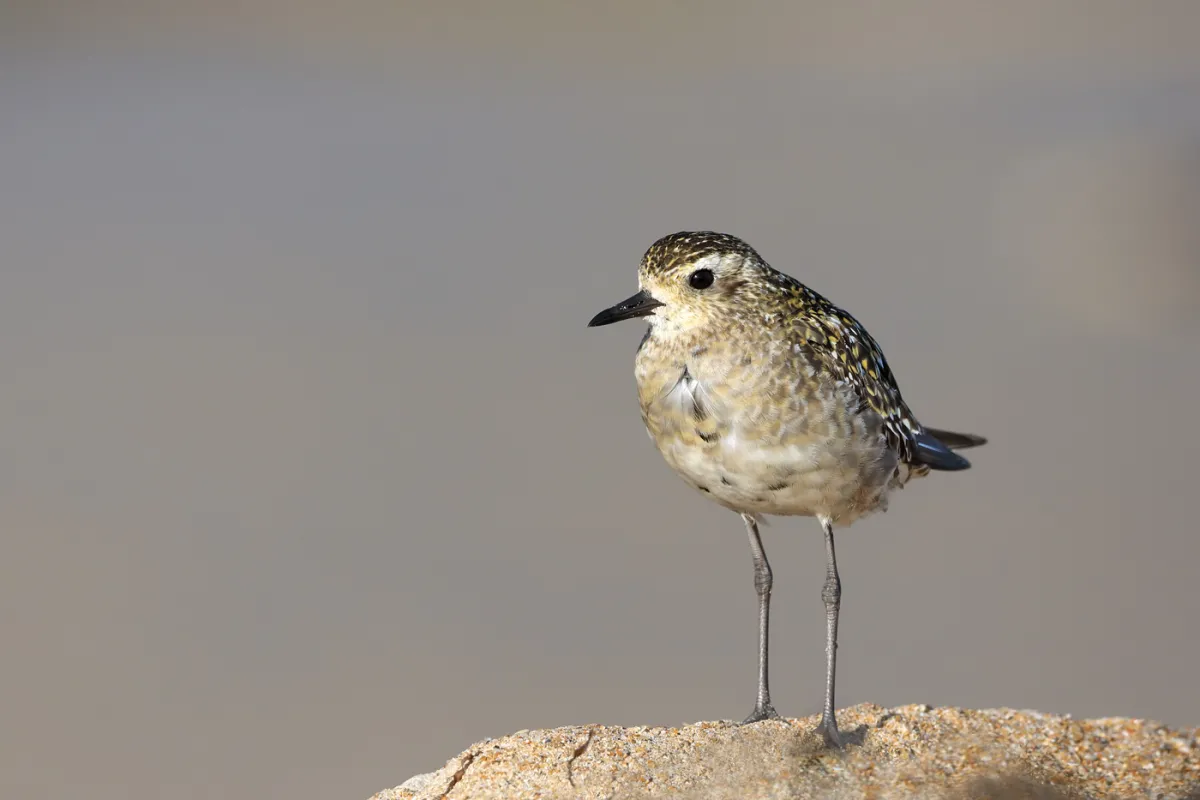
Pacific golden plover
Pluvier fauve
Torea
The Pacific Golden Plover Is 23 to 27 cm from tail to beak. The male and female both look similar with two colorations are seen in French Polynesia. The individuals who are not in reproduction are light brown with black spots with a beige and white stomach. The ones are in reproduction cycle have a black stomach that is outlined with a white line. It eats during the day a diet that consists of small crustaceans and molluscs as well as insects and larvae. At night, these birds form groups at the edge of the water. The Pacific Golden Plover has a remarkable migratory behavior that starts in Siberia and Alaska during the summer months May and July where it nests on the ground and lays 3 to 5 eggs that are incubated by both parents for 26 days. It then chases the summer to the south where it migrates more than 2,000 miles in one non-stop flight to places as far as Australia. It is seen in Tetiaroa from September through April before going back to the north. It is believed that it was these birds that tipped off early Polynesians in Tahiti and the Marquesas that there was land North, leading them to sail to Hawaii.



